
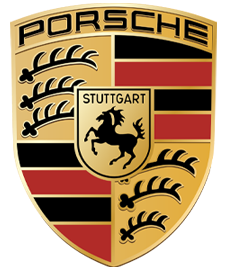
MODEL
PORSCHE 550 RS
YEAR
1955

Why Porsche? And why this one?
Going back in time, there are a few key words to help find a plausible answer: pioneering, inventive, ingenious, family, continuity. One of the first cars to be equipped with four electric motors, one for each wheel, with which a young Ferdinand Porsche entered a race on 23 September 1900, where he had no rivals. The same car was later to be equipped with a hybrid solution, internal combustion engine and electric motor. Pioneering in racing and ingenuity in technology. More than a century later, if we think of the pressure from public opinion for ever less polluting car production, to which the industry has responded with electric motors, it can be said that nothing new has been invented. Porsche had already thought of that. Inventiveness. After the war, the baton was passed on to his son Ferry, who in fact gave life to Porsche as a sports car manufacturer, writing entire pages of motorsport history from the 1950s to the present day. A family always at the forefront and with continuity of results; just think of the class and overall victories in the 24h of Le Mans. All this is tradition, it is legend. Together they generate passion, and for a car, passion, or the emotional drive, continues to be the engine of desire, first, and then, of choice.
Although it wasn’t the first, the Porsche 550 is the car that made the Porsche name an international automotive brand. It was the first to bear the coat of arms of the state of Württemberg and the city of Stuttgart, a prancing horse, on its bonnet. If, however, you want to give a physical dimension to passion, here are some criteria.
Rarity and originality are some of the drivers that make people opt for a classic car; more subjectively, this is also the case for beauty, for aesthetics. But what makes a car unique? What distinguishes it from others in its range? Certainly, its history, be it sporting or otherwise, maybe its styling content, or its contribution to technological progress. And that’s where the 550 RS, which stands for Renn Sport (Race Sport in German), chassis number 0047, stands out from the rest. Porsche built 90 of them, but only a fraction of that number were official Porsche KG competition cars. To be exact, only three were produced in 1955, and it is one of these three cars that is being discussed here.
Equipped with the mid-rear-mounted, 1.5-litre Fuhrmann 547 engine, number 90051, prepared in the Porsche racing department, this 550 RS made its debut at the 1955 24-Hour Le Mans race, a hard-fought event but marred by the serious accident of Pierre Levegh’s Mercedes 300 SLR, which crashed into the crowd and cost the lives of around 80 people. The accident was so serious that Alfred Neubauer withdrew the team from the race and Mercedes withdrew from racing for many years afterwards. As history records, the race was not interrupted and overall victory went to Mike Hawthorn’s Jaguar D-Type. This 550 RS finished sixth overall and third in its class with drivers Helmut Glöckler-Jaroslav Juhan, but this was only the beginning of its sporting adventure.


That same year, the car participated in the Lisbon GP with driving legend Stirling Moss. The English ace was under contract to Mercedes, which, as already mentioned, was to retire from racing, so it was natural for Moss to look for another car to continue his career. Moreover, it was not uncommon at that time for a driver to obtain permission from the car manufacturer he was racing for to race for another automotive brand, albeit within certain limits. Baron Fritz Huschke von Hanstein seized the opportunity and offered this racing great the wheel of the 550 RS chassis 0047. Car and driver did not disappoint. The car raced again with Moss at the 9h of Goodwood, although this time with less luck. Then, the Nürburgring 500km where it placed 2nd overall and 2nd in the S1.5l class, with drivers Hebert Linge and Richard von Frankenberg. Again, the Avus Berlin, 1st overall with Richard von Frankenberg at the wheel. The Jabekke National Belgian Race, again 1st in class 1500 and new record over 1km, with drivers Richard von Frankenberg and Nicolai de Gorhez. A truly distinctive result came in 1956 with race number 41 at the 12h of Sebring: 6th overall and 1st in the S1.5-litre class. Again, the names of the drivers were legendary: Hans Hermann and Wolfgang Graf Berge von Trips. At the end of the race, Porsche’s Sports Director, in full compliance with the commercial motto of the time for high-performance sports cars: ‘Race on Sunday, sell on Monday’, sold the car to the team of John Edgar, a name well known in the USA in the Sport Car Club of America (SCCA) championship, to race both with Ferrari and from then on, also with Porsche. The 550 RS was entrusted to the hands of Jack McAfee, who immediately appreciated the car’s agility. In 1956, McAfee won the SCCA national championship in the F class with the Porsche 550 RS chassis 0047. Later, the car also raced twice with Paul “Richie” Ginther: the Santa Barbara Road Races Preliminary, 4th overall, 4th in FM class and the Santa Barbara Sunday Road Races S1.5; 3rd overall 3rd in class also in S1.5-FM. The car was an official Porsche KG car, which raced at Le Mans and in Europe achieving important victories and top placings and won the American SCCA national championship in its class. It was driven by some of the biggest names of the time, true motorsport legends. It raced and won on all the major continents, but it doesn’t end there. Its story has continued, in fact racing on American tracks not only with men, but also with women like Ruth “Mamaroo” Levy, achieving outstanding and even outright results. The career of this Porsche 550 RS went on until 1963, albeit intermittently, testifying how the value of the project and the driving characteristics of the car were avant-garde. Not without reason that the 550 was widely called “The Giant Killer”, because despite the low engine displacement, it compared and often overtook cars equipped with much more powerful engines with displacements of 3,000 or 5,000 cc. As already mentioned, the uniqueness of a car is measured by the stature of its history, in this case by its technical solutions as well as by the names of the drivers who raced and led it to victory. An indelible testimony of the union between man and machine, when both parts manage to express themselves at the highest levels thanks to the technical content and distinctive features; in short, the character of the car and the talent of the drivers. This is undoubtedly one of the most successful and long-lived Porsche 550 RSs of all time. Its last documented race was in 1963.
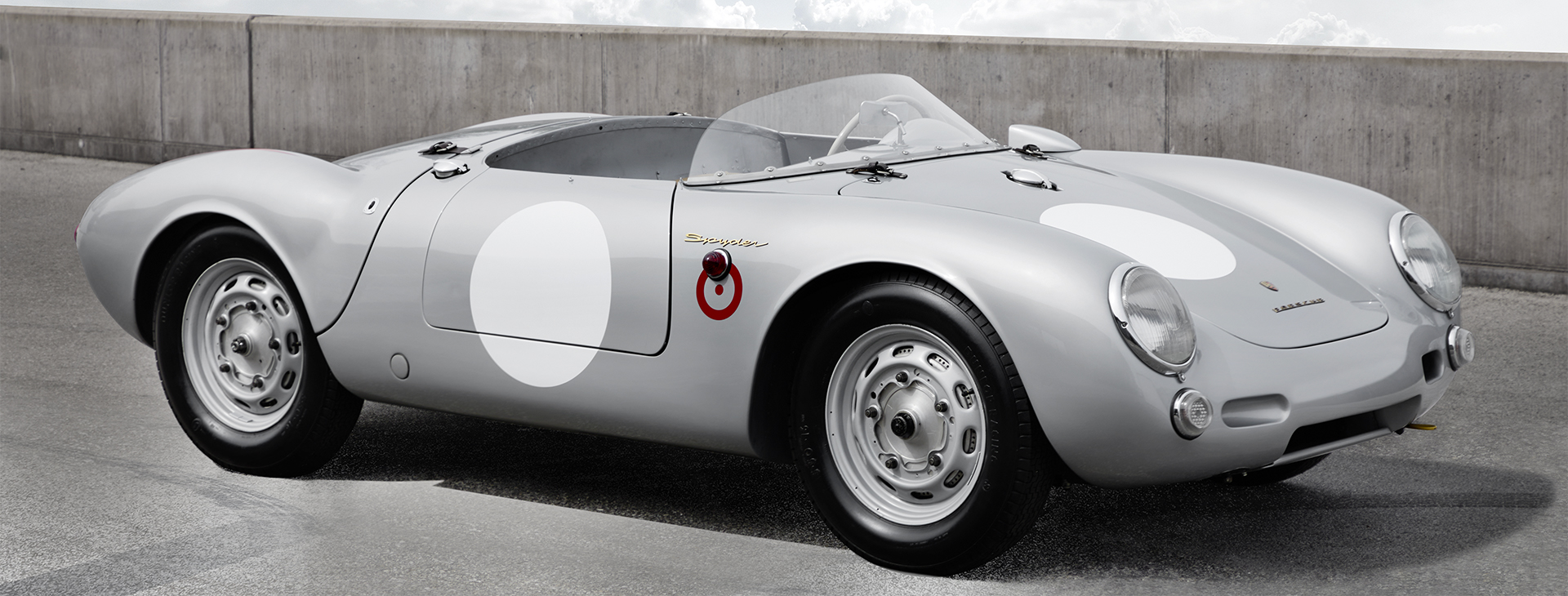
Pedigree

Genesis of an icon
“The Giant Killer”, as it was called in racing circles by the drivers. With good reason. Before it, not many would have believed it possible for a car with an engine of only 1.5 litres to compete at such a high level, and for such a long time, against cars with more powerful engines with displacements of 3.0 or 5.0 litres. The name of this racing car derives simply from the linear sequence of projects carried out by the design studio founded by Ferdinand Porsche, which was responsible for the production of mechanical parts. Just think of the numerous patents and commercial agreements such as that of November 1934 with Alfa Romeo, for the use of independent suspension, as well as the development of heavy vehicles, or all the development work done in the 1930s for Auto Union, which later became a real ‘powerhouse’ in the world of GP racing. In fact, despite the numbering, not all the project numbers were allocated and not so much for a question of organisational disorder, a quality that hardly characterises German-speaking countries. It was a premeditated decision, so as not to give customers the impression of a lack of experience, or of a few completed projects. For example, 549 was assigned to the design of a truck transmission for the Fuller Manufacturing Company in Kalamazoo, Michigan (USA), while 550 was the number assigned to the design of a racing car on 27 October 1952. The project was managed by Ferry Porsche, the son of Ferdinand, who never actually saw the 550 on the road; his life came to an end at the age of 75 on 30 January 1951. In fact, the recovery after the war period was linked to the company’s troubled past when it forcedly operated on the side of Hitler’s Nazi Germany (think of the development of the Beetle), for which Ferdinand Porsche was sentenced to prison by the French. The decisive intervention of Piero Dusio, with enormous financial sacrifice, allowed his release after about 20 months in prison. One of the first projects of the Porsche Engineering Studio after the Second World War was a racing car for Cisitalia, the 360 Grand Prix. After his father’s death, although they had already built the 356, Ferry Porsche inherited more of a technical legacy than a full-fledged automotive brand. A team made up of technicians and engineers that his father created in the years between the two world wars and that developed avant-garde technical solutions, which allowed, for example, the Auto Union GP cars to dominate competition at the turn of the 1930s together with the Mercedes Silver Arrows. This was the basis on which Ferry Porsche, then a little more than 40-year-old, would build the future and the glory of one of the most appreciated names in world motorsport. Erwin Komenda was responsible for the design of the bodywork for the 356, the 550 and also participated in the birth of the 901, which would become the 911, whose forms have stood the test of time, despite the somewhat turbulent relationship with Ferdinand Alexander (Bützi) Porsche. His name is closely related to the concept of style and material appearance of Porsche and its cars in the early days of the brand’s existence as a manufacturer, making it an iconic sports marque. During his time, Komenda was actively involved in the body design of Volkswagen’s Beetle, as in the case of the Porsche Type 60 project, which is the prototype of the best-selling car of the last century (and certainly much loved for its fun, rounded, somewhat chubby shape). It is interesting to observe how the 356 in particular represents an evolution of the Beetle’s design on a stylistic level towards a concept of a racing car; still rounded but lower, grittier while remaining mellow in its form. The 356’s front lights are very reminiscent of the famous Volkswagen.
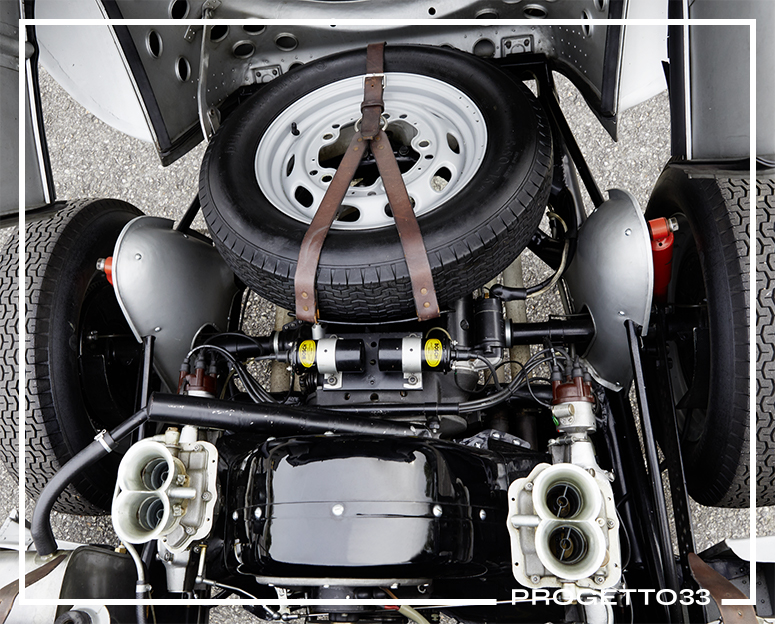
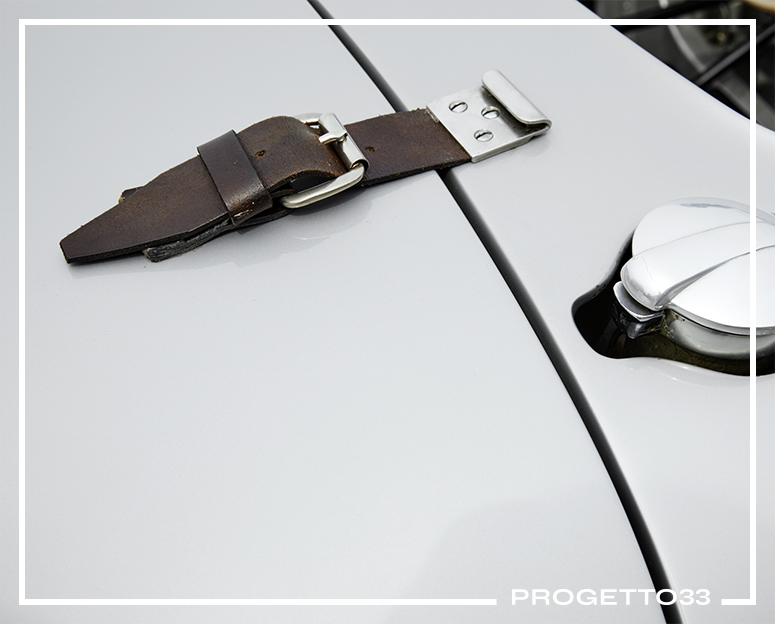
The 550 bears the same resemblance to the Beetle. Ferry Porsche himself earlier declared that they were right to develop their own racing car from Volkswagen’s Beetle design. In the late 1940s and early 1950s, Porsche was not yet synonymous with racing cars, but that would change with the 550. New blood would be added and new winning initiatives would give rise to the success and commercial expansion of the fledgling Porsche brand. Until 1952, Porsche did not have a trademark. Encouraged by the volcanic Max Hoffman, the Austrian-American importer of various European automotive brands in the USA, Ferry Porsche decided to develop a coat of arms with the symbol of Baden-Württemberg and the city of Stuttgart, a prancing horse, surmounted by the family name. With the approval of the State and the Municipality, it was Erwin Komenda who completed Ferry’s design, which has been affixed to the bonnets of these famous cars from Zuffenhausen since 1953. The person of Max Hoffman was critical in the birth of the 550, as he ensured that a sports barchetta would be enthusiastically received in the wealthy American market. Together with West Coast Porsche dealer Johnny Von Neumann (also Austrian by birth), they obtained the ‘Type 540 American Roadster’ for this market, which enjoyed a short life, with only sixteen units built, all for racing. The baton of an open, light, spirited and competitive Porsche was later picked up by another enterprising character, the Frankfurt-based Volkswagen dealer Walter Glöckler. Glöckler enlisted the valuable assistance of Hermann Ramelow, a skilled mechanic who had already worked at Adler before the war. Between 1950 and 1951 they built and perfected a spider with a 1-litre Porsche engine, making the car competitive and becoming champion in the 1.1-litre category in 1950. This result brought constructive publicity for Porsche, so a collaboration began whereby the Glöckler-Ramelow prototypes bore the Porsche name and later had the latest engine developments from the young car manufacturer at their disposal. The line of development started by the Frankfurt duo would later become fertile ground for the parent company to create the 550-development project. There are many pieces that make up a jigsaw puzzle, but although all of them are essential to complete the picture, some of them represent the references around which the emerging form takes shape. The story of Walter Glöckler in the period from 1950 to 1951 has this significance in the birth of the Porsche 550. A key moment that as a direct consequence led in 1953 to the birth of the first Type 550 RS, where the acronym stands for Renn Sport, from the German Corsa Sport. With Helmut “Helm” Glöckler, Walter’s cousin, at the wheel, the 550 made its debut in the Eifel races at the Nürburgring circuit on 31 May 1953 with a victory, a feat achieved by few other cars. Participation in the following 24-Hours Le Mans race saw two 550s finish first (with von Frankenberg-Frère) and second in their class. Another name decisive for the brand was that of Baron Fritz Huschcke von Hanstein, a great automobile enthusiast, driver and already a winner in the Mille Miglia in 1940 with the BMW 328 coupé together with Walter Baumer. Huschcke von Hanstein was to become Sports Director and commercial soul of Porsche based on the motto: “Win on Sunday, sell on Monday”. The 550’s breakthrough, however, came with the unequivocal contribution of Ernst Fuhrmann, the brilliant Viennese engineer and father of the Type 547 four-cam engine.
This engine would go on to become one of the most successful in motorsport history with an endless series of class and even outright victories. The “Fuhrmann-Motor” is so complex that more than 200 hours of skilled mechanics were needed to fine-tune it. Its components resemble a miniaturisation similar to a watch mechanism. Curiously, Ernst Fuhrmann had to work as a watchmaker after the war in order to support himself. The 550 in its various configurations would go down in legend for its extraordinary number of victories, dominating the 1,500-cc class in Europe as well as the USA during the 1950s. Its class victories at the 24 Hours of Le Mans, the 12 Hours of Sebring, the 1,000 km of Nürburgring or the Targa Florio are good examples of the sporting rank it belongs to. It became an icon of contemporary society following the sad car accident on 30 September 1955 of the emerging Hollywood film star James Dean while driving his 550 numbered 130, which he christened “Little Bastard”. Appreciated for its agility, lightness and surprising reliability in racing, it garnered the affection and respect of the drivers of the day and holds a special place in the hearts of all enthusiasts. The great British driver Ken Miles said of a 550 he acquired from Johnny von Neumann and raced on the West Coast in 1957 that its engine ran so well and smoothly that they didn’t want to tamper with it, just changed the spark plugs. Later in the race, the engine broke down, but Miles was not disappointed or angry. On the contrary, he argued that the engine had every right to let go when it needed to. However, it rarely needed to.
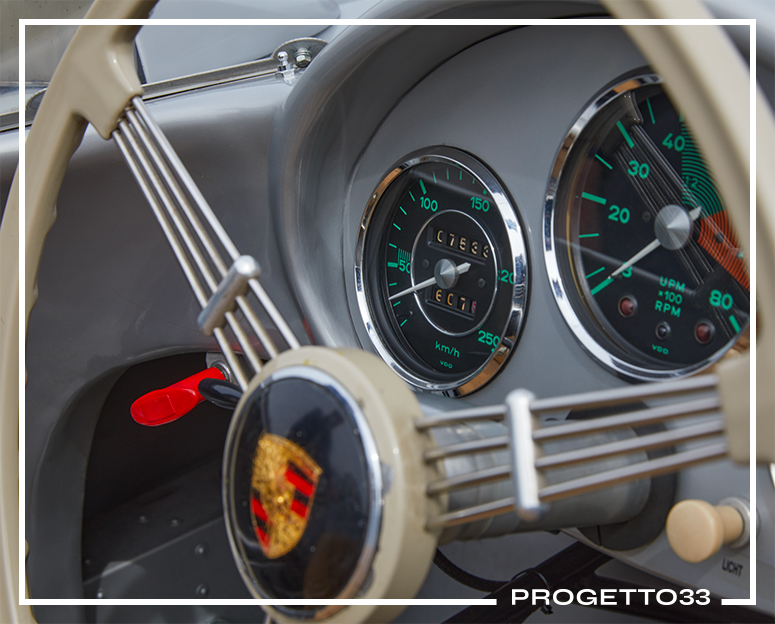
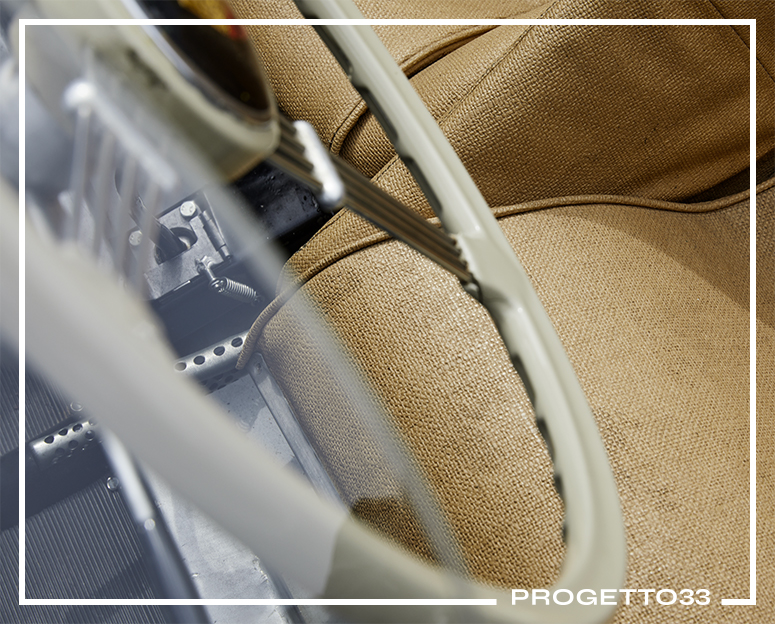
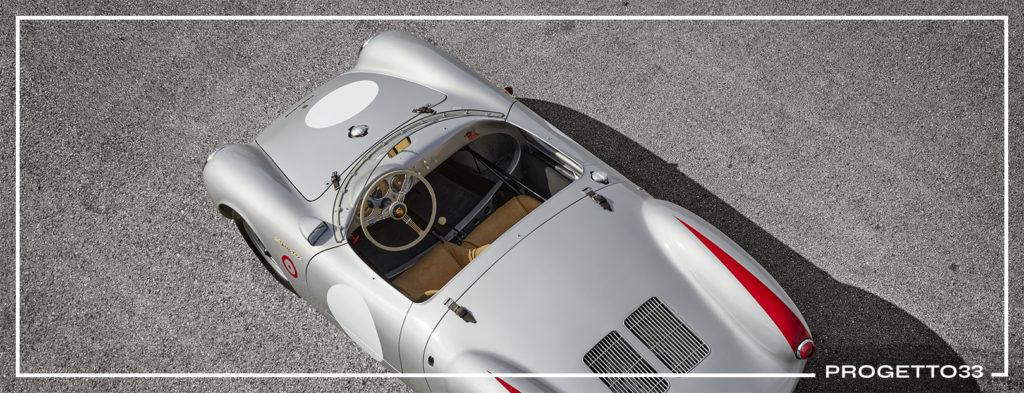
Photographer: WK – Fotografie GmbH
